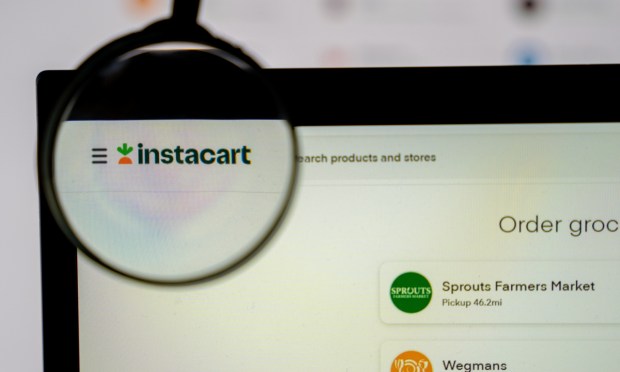
Delivery platforms like Instacart are becoming a valuable avenue for brands looking to connect with consumers who prefer the convenience of grocery shopping from their own personal spaces.
In its most recent initiative, Instacart is poised to provide brands with category-specific buying data, enabling them to cultivate larger, more purpose-driven audiences that closely align with the shopping preferences of consumers within Instacart’s Marketplace. This marketplace encompasses more than 1,400 retail banners across North America.
Through adopting this data-driven strategy, consumer packaged goods (CPG) brand partners can expand their outreach beyond Instacart’s platform and engage with consumers.
“Brands continue to tell us that they are looking for performant, data-driven solutions to maximize their return on investment,” said Ali Miller, VP of Ad Product at Instacart. “Instacart is attractive to marketers who want to drive results by reaching high-intent consumers, on a platform enhanced by our depth of consumer behavioral data and highly measurable outcomes. Now, we can help brands expand their reach to audiences off our Marketplace via our partnership with The Trade Desk. It’s critical for brands to reach consumers at scale, and ultimately drive purchase — and we’re excited to provide new solutions to help achieve those goals.”
This partnership enables brands to craft tailored audience segments for specific product categories and ultimately bolster their marketing tactics and forge stronger connections with consumers.
These categories encompass individuals who have displayed interest in the category but have not yet fully embraced the partner brand, devoted customers who consistently fill their carts with the partner brand’s products, and shoppers who may have temporarily disengaged from their brand, offering an opportunity for reengagement.
Additionally, there are potential customers who have never included their brand on their grocery lists.
In June, PYMNTS reported that as grocers launched in-house retail media networks, offering brands comprehensive insights into how their marketing efforts were performing, smaller chains were put in a position where, if they wanted to keep up, they might have needed to scale up their reliance on third parties such as Instacart.
At the time of the report, Northeast Grocery, the owner of supermarket chains Price Chopper/Market 32 and Tops Friendly Markets, which collectively spanned 279 locations, had announced its expansion of the partnership with Instacart. This expansion included the launch of a retail media network powered by Instacart’s Carrot Ads technology.
“Our cutting-edge retail media network, powered by Carrot Ads, helps us connect brands directly with customers at the point of purchase,” Diane Colgan, SVP, marketing at Northeast Grocery, said in a statement. “This partnership is another example of the efficiencies that our organization brings to the businesses of Price Chopper/Market 32 and Tops.”
Of course, Northeast Grocery wasn’t the only smaller chain realizing the importance of entering the retail media arena to maintain competitiveness, even if it meant relying more on Instacart. Just last month, Sprouts Farmer’s Market, with over 380 stores spanning 23 states, announced the introduction of its retail media network, powered by Instacart’s Carrot Ads.
These partnerships emerge at a time when industry leaders are highlighting their in-house solutions. Kroger, a grocery giant, offers Kroger Precision Marketing (KPM) ad solutions, while Walmart has Walmart Connect, and Albertsons operates the Albertsons Media Collective. Last fall, Ahold Delhaize’s U.S. arm revealed its move to bring its retail media network in-house.